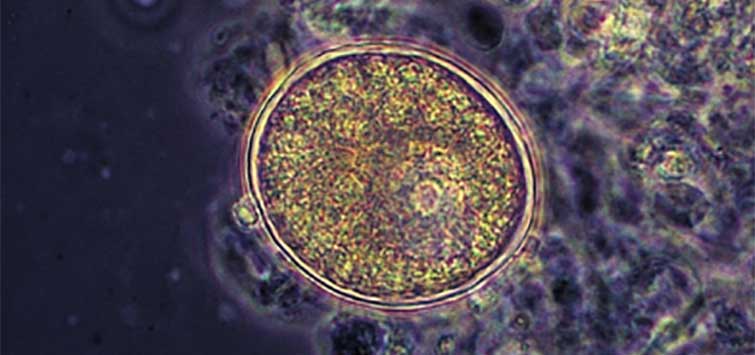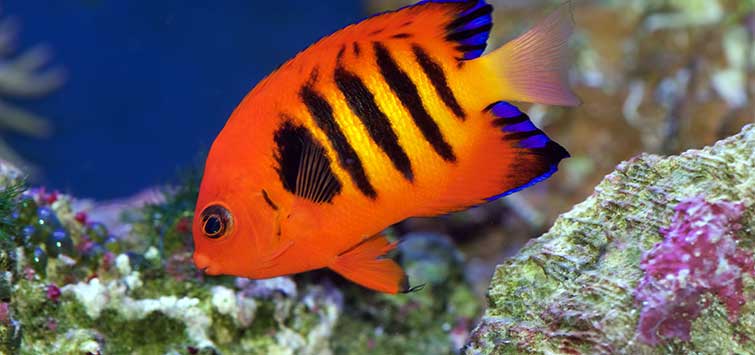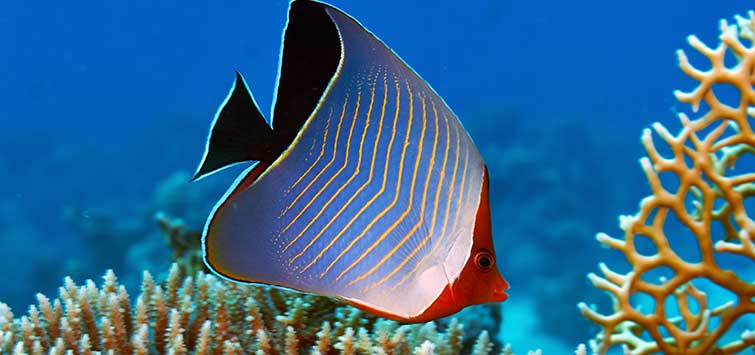Marine Ich Cryptocaryon
Author: Bobby Jason Watson
Inarguably the scourge of marine aquaria, Cryptocaryon can quickly turn flourishing systems into lifeless crypts. Our author recalls his battle with this parasitic disease, and the challenges he faced before eradicating it.
A Rookie Mistake
When I began stocking my new 46-gallon marine aquarium, I noticed some algae overgrowth on the live rock and walls. I knew I would need some type of herbivore to control algae, so I started looking at the local dealers. One of my friends had just plunged into the saltwater dealership business, and I thought I might check his stock. I found a one-spot foxface Siganus unimaculatus in one of his aquariums, a unique omnivore that would not only add color but control some of the algae. He said the fish was shipped to him the previous week and it was very healthy. Upon close inspection, I saw no cause for alarm about the fish, so I took a chance and bought it.
The Problems Begin
After acclimating, I released the fish into my new tank, which already contained a cinnamon clown and a yellow-tailed blue damsel. I instantly had a feeling there was something wrong. The foxface had left some whitish mucus in the bag and was now shedding the rest from its body into my tank. Not knowing then what I was in for, I tried to get as much of the mucus out with a dip net and then let it be.
Over the next few days, I noticed small, pimple-like spots developing on the foxface, and the mucus shedding continued. After some research, all signs pointed to marine ich Cryptocaryon irritans. I even found the name scary!
It seems that the parasite causing this condition is highly contagious and sometimes deadly. A fully ciliated protozoan that penetrates the gills and skin of the infected fish, it can cause symptoms ranging from severe irritation and loss of appetite to respiratory distress and even death. The mucus I saw was the first symptom of the fish attempting to shed the parasite from its body.
Fighting the Disease
Fearing the rest of my fish would be infected, I immediately removed the fish and placed it into a hospital tank I luckily had running. This parasite, once attached to the fish, burrows into the skin where it feeds and matures for five to seven days. The white spots on the fish represent this stage. The protozoan then breaks free from the skin and becomes free swimming. This creature swims for about 12 to 18 hours until it attaches to a rock, coral, glass, or the substrate. Then it creates a cyst and reproduces, creating up to a couple hundred daughter organisms.
The reproduction process can take approximately a month, which means the entire lifecycle of this organism spans one to six weeks. The key to eradicating this parasite is that it is an obligate parasite, which means it must have a host to survive. Invertebrates are fortunately immune to Cryptocaryon.
Copper
I soon discovered the treatment for marine ich—copper. Copper is deadly to most invertebrates in addition to this protozoan, so be sure to use it only in a hospital tank, otherwise you may destroy all desirable organisms as well. The copper bonds to calcium carbonate on the live rock and substrate, so a quarantine tank with a smooth bottom is recommended. Also be sure to remove any carbon from the filter of the tank, or the copper will immediately be removed. The copper must be active while the organism is in the free-swimming stage to be effective.
Results
My treatment session turned out to be longer than I preferred. I dosed the hospital tank according to the directions, and after two weeks I saw no spots on the fish. I planned to return the fish to the main aquarium within 14 days of no symptoms. I reinstalled the carbon filter to remove the copper, and within a few days the white cysts broke out again. Apparently I did not wait long enough for the copper to kill the protozoan, so I started the process over. After a few attempts, the foxface was finally clear for a period of three consecutive weeks.
Lessons Learned
Very carefully, I re-acclimated the foxface to the main aquarium, making sure not to bring any copper with it. Fortunately none of the other fish ever contracted the parasite, and the foxface stayed healthy.
It turns out that marine ich is a common disease that poses a problem to saltwater hobbyists. Common in nature, the host-parasite ratio is much better for the fish in their natural habitat. For instance, 200 parasites in several million gallons of open ocean water would find it much harder to find a host than the same number would in my 46-gallon aquarium.
UV Sterilization
I am currently shopping for a UV sterilizer to install onto the display tank—a UV sterilizer with sufficient power will kill the free-swimming parasites. The UV will also control other potential problems, such as free-floating algae and bacteria. They come in many different wattages and styles; the size of your aquarium will dictate your choice. The dwell time of the water under the ultraviolet lights is very important, allowing you to choose a lower wattage if you desire.
Quarantine Tank
I now know the true value of a quarantine tank. The old saying “an ounce of prevention is worth a pound of cure” is truly important with marine ich. I thought that setting the extra tank up would be a waste of time and energy in the beginning, but I was thankful I took the advice and had a hospital tank at the ready when disease struck. Now I know why the experts all say a new addition to a display aquarium should be watched carefully in quarantine for a period of no less than 10 days. Set one up for your own introductions, and watch all new fish closely for any symptoms so you may avoid the ordeal I endured.
See the full article on TFH Digital http://www.tfhdigital.com/tfh/200907/#pg101

.png?h=595&iar=0&w=2781&hash=5FD5E69473BCC22199FBFA2FB71B6033)



